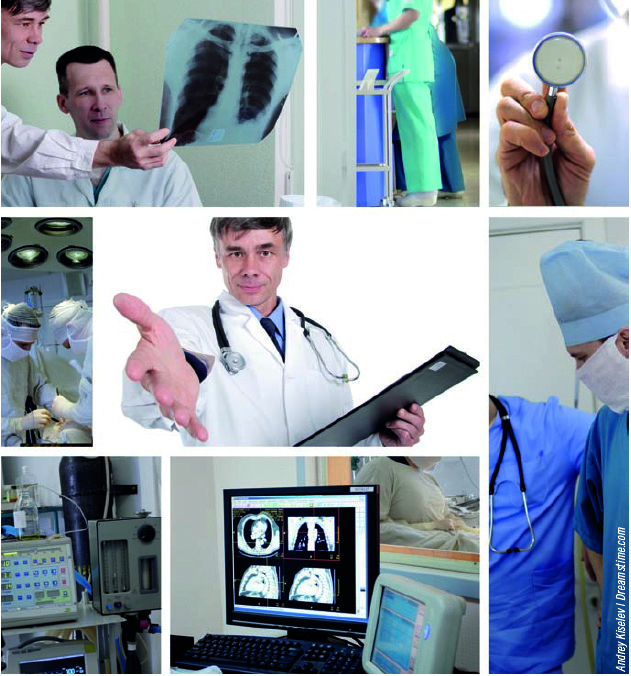
This content was published in 2010. We do not recommend that you take any clinical decisions based on this information without first ensuring you have checked the latest guidance.
In short
Consultant ward rounds offer pharmacists a greater understanding of patient care and an opportunity to demonstrate their worth to other healthcare professionals.
Good preparation will make you more effective on a ward round. During the round, use evidence and guidelines to back up your suggestions. Afterwards, follow up any unanswered queries and reflect on your performance.
The participation of pharmacists on consultant ward rounds is common practice in many UK hospitals and offers the pharmacist numerous associated benefits, such as:
- Increased knowledge of patients on the ward
- The ability to influence medicines management proactively at the point of prescribing
- Improved integration into the multidisciplinary healthcare team, allowing patients and other healthcare professionals to appreciate the contributions pharmacists can make
- An opportunity for continuing professional development (eg, through problem solving and improved communication skills) since many consultants use the ward round as a teaching tool for their junior doctors
Preparing for ward rounds
The starting point should be to decide which ward round to attend and how often. Staff resources often limit the number of ward rounds that pharmacists can attend, especially if different consultants conduct their ward rounds simultaneously. Ask your colleagues if they have experience of particular ward rounds since some consultants are more amenable to pharmacists attending their rounds than others. It may be necessary for pharmacists to attend rounds on wards that they do not usually cover (eg, post-take ward rounds, antimicrobial or pain team ward rounds) as part of their day-to-day activities. In addition, since some ward rounds are of a highly specialised nature (eg, intensive care — see Box 1), the level of input that pharmacists provide can vary.
Box 1: Specialist input on intensive care units
During intensive care unit (ICU) ward rounds, consultants are more likely to ask questions about restarting oral medicines, administering them through feeding tubes and therapeutic drug monitoring than specialist questions about routine intensive care medicines. Patients in an ICU are dynamic, especially in the acute phase of their admission. Their renal function could be satisfactory one day but, on the next day, might have deteriorated to the point that haemofiltration or dialysis is required. Thus, any interventions you have made need to be evaluated daily.
Patients are usually sedated so are unable to talk; this presents an additional challenge. Information required to suggest interventions might only be ascertained by reviewing multiple charts or by discussing the patient’s condition with nursing and medical staff.
It is courteous to ask the consultant’s permission beforehand. At the same time, it is useful to confirm the usual days and times of ward rounds so that pharmacy department rotas can be amended to accommodate your attendance. The consultant should also be given advanced warning if you cannot attend all or part of a ward round.
Good preparation is needed to ensure that you have sufficient information about each patient to make safe and effective interventions (eg, identifying that a patient has asthma would prevent you from recommending a beta blocker to treat atrial fibrillation). It also helps you to be confident that your input will be useful.
Full preparation
If you have the time to review all patients before the ward round occurs, recording concise information about each one will enable you to identify potential interventions and assess the suitability of suggested medicines quickly. One way of doing this involves completing a mini pharmaceutical care plan for each patient before the ward round. This should help you review patients and allow you to match each prescribed drug to the presenting complaint or past medical history, thus identifying those without clear indications along with any unmet pharmaceutical care needs.
When you first review a patient after his or her admission, ensure that an accurate drug history has been documented and that his or her medicines have been reconciled (see Clinical Pharmacist 2009;1:31). Review all prescription charts (including those for oxygen, anticoagulation and parenteral administration) and identify any missed doses — this could affect response to treatment. Assessment of bedside data such as blood pressure, heart rate, blood glucose and stool charts will help to determine whether current treatment is effective and identify some potential adverse drug reactions.
After the aforementioned review has been completed, list and prioritise the interventions you have identified. “High” priority interventions must be implemented during the ward round or later that day; “medium” priority interventions require implementation within the next few days; and “low” priority interventions should be resolved before discharge.

Unknown patients
It may not always be possible to prepare as thoroughly as previously described. For example, posttake ward rounds usually occur first thing in the morning and will review patients admitted during the previous 24 hours. A pharmacist may not have seen these patients beforehand and hence medicines reconciliation might not have been undertaken. You might need to think on your feet and be prepared to locate necessary information quickly.
Some patients are discharged on the same day as the post-take ward round (eg, following a negative test result); take note of such patients to ensure discharge prescriptions are written in a timely fashion and ask the patient which of his or her usual medicines need to be supplied.
Antimicrobial ward round
Antimicrobial ward rounds are not usually confined to one particular ward and often involve the review of patients referred to the antimicrobial team by other pharmacists or doctors. Therefore, if you attend this ward round you are unlikely to be familiar with the patients or their histories. Nonetheless, you could address this by discussing them with your pharmacy colleagues or ensuring that an adequate referral system is in place within pharmacy to ensure all the necessary information is provided beforehand.
Pharmacy involvement on this ward round is important for minimising antimicrobial resistance and hospitalacquired infections and requires any pharmacists taking part to have a thorough knowledge of the hospital antimicrobial formulary.
During ward rounds
Approach a ward round in a professional manner by ensuring you arrive on time and well organised. Informing the team of any contributions you have already made to a patient’s care (eg, warfarin counselling, smoking cessation advice) will prevent duplication of effort. When discussing issues at the patient’s bedside be aware of any sensitive issues, such as whether the patient knows his or her diagnosis. Taking charge of each patient’s prescription chart will help other healthcare professionals to identify you as the individual to ask about drug treatment.
Use your mini profiles (if you have had time to write them) as prompts for interventions identified and to assist you with any questions asked. It is perfectly acceptable to admit when you are unsure of the answer but always offer to find out.
High-priority interventions should be raised first to ensure they are acted upon. If time allows, medium- and low-priority interventions can also be addressed. Interventions need to be justified according to pharmacological rationale, published guidelines and evidence (if necessary and wherever possible, bring summaries of relevant papers or guidelines to the ward round). For example, when advising on switching to an antibiotic with a narrower spectrum of activity, identify the likely causative organisms and convey whether the antibiotic covers these bacteria, rather than just quoting the antibiotic formulary. These actions, along with advising the team on the next steps in treatment, will demonstrate that you are a valuable resource rather than just an enforcer of hospital policies.
It is important to provide specific advice to the team — such as by specifying a suitable choice of medicine and dose (depending on the patient and the condition being treated) or, if therapeutic drug monitoring (TDM) is needed, the time at which blood samples should be taken.
It is not necessary to spend all your time with the team since some activities (eg, reviewing chest X-rays and CT scans), while interesting, will be less relevant to you. Use this time efficiently by completing other tasks such as taking medication histories, clinically checking discharge prescriptions or researching answers to questions asked previously.
Evidence supporting pharmacist attendance
The contributions pharmacists make during ward rounds has been evaluated in several studies. One UK study demonstrated that when pharmacists attended post-take ward rounds (PTWRs), which are used to review newly admitted medical patients, they made 1.84 contributions per patient; this equated to one contribution being made for every 10 minutes of pharmacist time spent on the round.1
In another study conducted in a UK hospital, pharmacists attending PTWRs improved the accuracy of the patient medication histories taken, optimised therapy and delivered cost savings — the data obtained resulted in the funding of a pharmacist post specifically for attending PTWRs.2
These findings are particularly important given the results of a study conducted in New Zealand that showed physicians did not review medication charts whatsoever for almost a quarter of patients during routine ward rounds and one third of patients on PTWRs.3
After the ward round
It is important that you follow up actions agreed during the ward round (eg, dose adjustments in light of TDM, patient counselling) within the time scales agreed. If appropriate, communicate any changes made to pharmacological therapy to pharmacy colleagues and ensure that supplies are made to the ward so that new treatments can start promptly.
In addition to documenting interventions suggested, you should reflect on your own practice following the ward round. If an intervention was not acted upon, think about why this was and whether you could do something differently next time. For example, should you bring along a copy of local guidelines to back up a recommendation to withhold simvastatin while a patient is taking a course of erythromycin? Could this be an opportunity to educate the medical team? Your ward round intervention log and reflections can be used to identify personal CPD needs and provide evidence for your NHS Knowledge and Skills Framework portfolio.
Note
Clinical Pharmacist PRACTICE TOOLS do not constitute formal practice guidance. Articles in the series have been commissioned from independent authors who have summarised useful clinical skills.
References
- Bednal R, McRobbie D, Russell SJ, et al. Prospective evaluation of pharmacy services to post-take ward rounds. The Pharmaceutical Journal 2003;271:22–3.
- Fertleman M, Barnett N, Patel T. Improving medication management for patients: the effect of a pharmacist on post-admission ward rounds. Quality and Safety in Healthcare 2005;14:207–11.
- Looi LL, Black PN. How often do physicians review medication charts on ward rounds?
